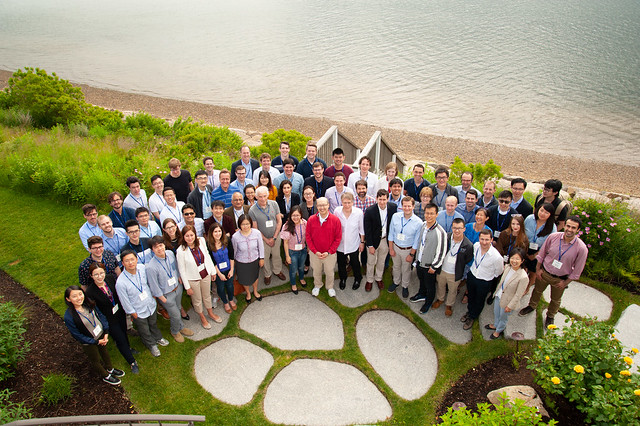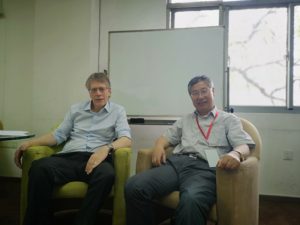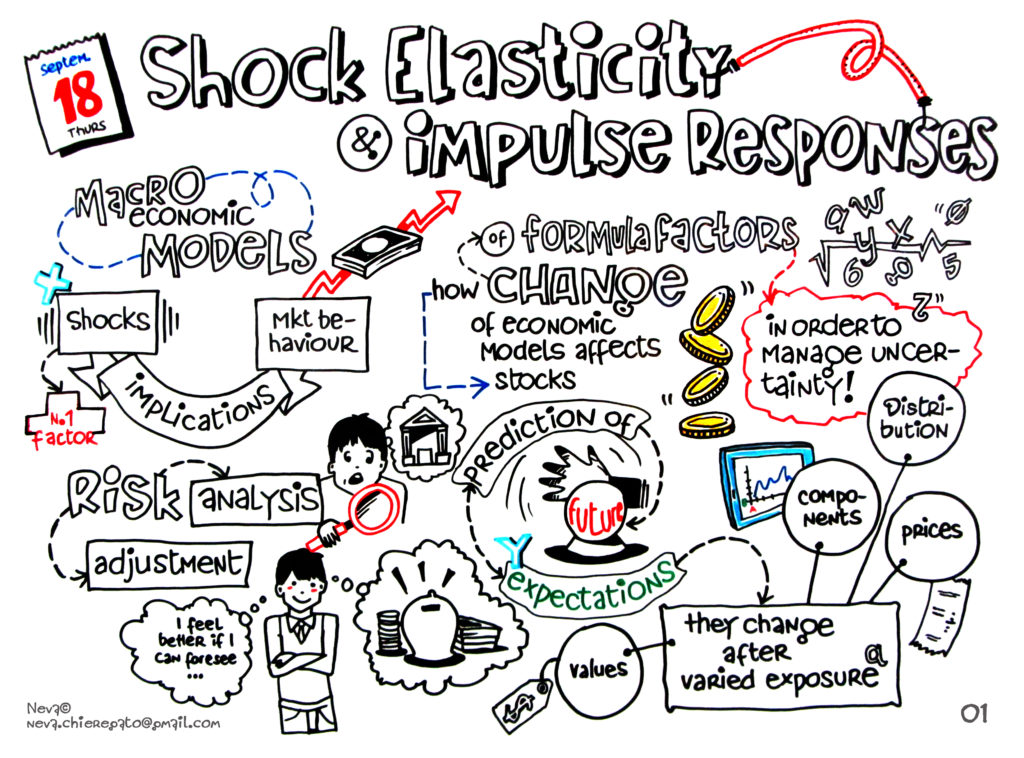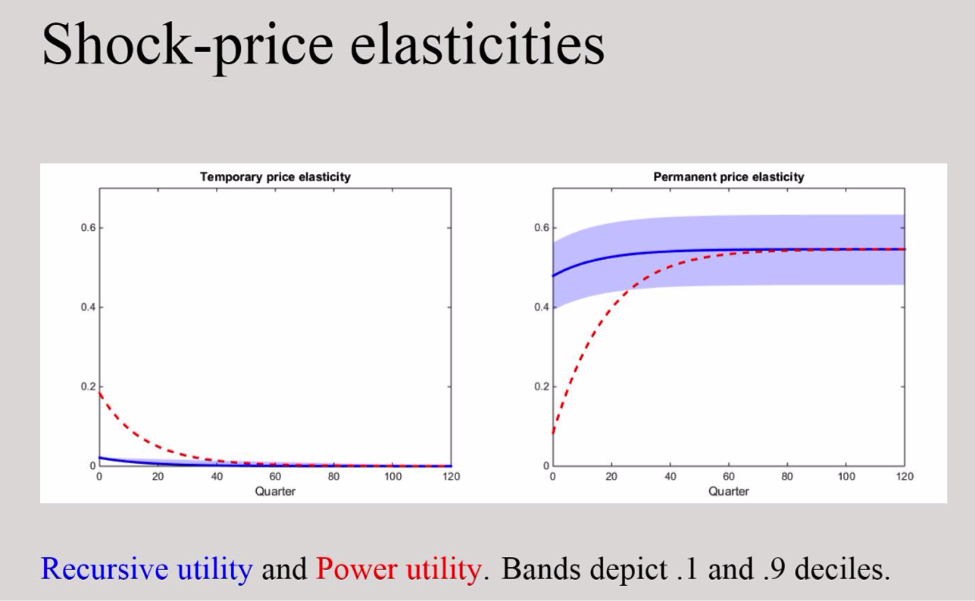Navigating Uncertainty
March 11, 2022
Uncertainty is pervasive and impacts many economic decisions that participants in the macroeconomy frequently make. How should individuals and enterprises navigate this uncertainty? How does this uncertainty spill over to financial markets? How should we incorporate uncertainty, broadly conceived, into policymaking? I have some recent contributions that wrestle with these questions, with some at a much more conceptual level and others directed at enhancing our understanding of markets and policy.
Two of the more conceptual papers mentioned below show how to formalize “ambiguity aversion” in models that are posed in continuous time. Both papers are co-authored with Jianjun Miao, Boston University. To place this work into context, imagine an environment in which a decision-maker uses historical data to update beliefs about a family of models. Learning can occur with Bayesian updating, but only with the caveat that the updating rule requires a prior distribution. Indeed, when it comes to subjective inputs into decision-making, the Italian probabilist statistician, Bruno de Finetti remarked:
“Subjectivists should feel obligated to recognize that any opinion (so much more the initial one) is only vaguely acceptable. . . So, it is important not only to know the exact answer for an exactly specified initial problem, but what happens changing in a reasonable neighborhood the assumed opinion.”
Robust Bayesian methods seek to address this challenge. In a dynamic setting, ambiguity about the initial subjective prior implies over to the posterior distribution conditioned on a data history. In effect, “yesterday’s posterior is today’s prior.” We adopt a robust Bayesian approach to decision-making and produce tractable continuous-time, recursive formulations by making a novel limiting argument. By design, the outcome is a recursive, smooth ambiguity adjustment.1 This derivation of ambiguity aversion with a well-defined continuous-time limit is provided in the PNAS paper entitled, “Aversion to Ambiguity and Model Misspecification in Dynamic Economic Environments.” Our more recent paper entitled, “Asset Pricing under Smooth Ambiguity in Continuous Time” takes this formulation “out for a spin” by deducing some novel asset pricing implications and exploring consequences for portfolio choice in the face of both Brownian motion risk and ambiguity over alternative models of state dynamics.
The other two conceptual papers discuss challenges that arise when potential model misspecification is entertained at a formal level. It has long been appreciated that we use models that are necessarily misspecified to guide our understanding. One of the more famous quotes in this regard is by George Box (1979):
“Now it would be very remarkable if any system existing in the real world could be exactly represented by asimple model. However, cunningly chosen parsimonious models often do provide remarkably useful approximations.”
When econometricians devise formal tests of models, unfortunately, this insight is often lost. However, a lot is loaded into the term “useful” in Box’s quote. In my view, potential model misspecification is an important component to uncertainty worthy of analysis in its own right.
How is a concern for model misspecification best formalized in practice, and how is the accompanying “aversion” distinct from ambiguity aversion? Two of the recent papers explore this theme building on earlier work by my co-authors and me and by others. One working paper, entitled, “Making Decisions Under Model Misspecification” takes an “axiomatic” approach by formalizing the aversion to potential model misspecification concerns in contrast to aversion to ambiguity over alternative models.
The other paper, “Structured Ambiguity and Model Misspecification” (published in the Journal of Economic Theory) is explicitly dynamic, building connections between statistical measures of divergence and model misspecification concerns. In misspecification analysis, there needs to be some way of limiting the ways in which the dynamic statistical model could be flawed. In our past work, as well as that of many others, we found value in using what are referred to as statistical divergences to restrict the range of possible alternative models under consideration. By design, a statistical divergence is small for models that are hard to distinguish when using historical evidence. As Tom Sargent and I show in the paper, some commonly used approaches to ambiguity aversion are incompatible with our use of statistical divergences to limit the type of potential model misspecification. The paper with Sargent also explores the tension between the well-known statistical construct of admissibility and dynamic consistency.
Importantly, the smooth ambiguity preferences derived in the Hansen-Miao PNAS paper also allow for misspecification concerns. Similarly, Hansen and Sargent in their recent Journal of Economic Theory paper show how to extend previous continuous-time specifications of ambiguity aversion to incorporate explorations of potential model misspecification.2
I also have some applied papers that explore the implications of these decision theory formulations in practice. I think of them as more than just “illustrations of methods,” as they provide novel substantive insights. My paper with Tom Sargent “Macroeconomic Uncertainty Prices When Beliefs are Tenuous” published in July 2021 in the Journal of Econometrics shows how ambiguity aversion induces fluctuations in asset prices as the perspective investors have on alternative models shifts depending upon the state of the macroeconomy. The research reflection “Acknowledging and Pricing Macroeconomic Uncertainties” VOX EU/CEPR provides a broader perspective and a nontechnical discussion of this research. The two papers with Barnett and Brock explore the implications for the social cost of carbon when ambiguity and model misspecification concerns are incorporated into the modeling. The decision-maker in these papers is a hypothetical “social planner,” and the social cost of carbon is deduced as the shadow price. The paper entitled, “Uncertainty Spillovers for Markets and Policy” published in August 2021 in the Annual Review of Economics provides an overview of these and related contributions in economics and finance.
Finally, I joined a set of scholars across alternative disciplines in writing a perspectives issue on lessons from decision theory for designing public policy responses to pandemics entitled, “Rational Policymaking During a Pandemic” published in January 2021 in PNAS.
1 The notion of “smooth ambiguity” was introduced by Klibanoff, Marinacci, Mukerji (2005, Econometrica), but with the explicit link to robust Bayesian methods.
2 See Chen and Epstein, 2002, Econometrica for a continuous-time formulation of ambiguity aversion.
Papers:
Applications:
- Barnett Brock Hansen (RFS)
- Hansen-Sargent (Journal of Econometrics)
- Hansen-Sargent (VOX EU/CEPR)
- Barnett et al (NBER)
- Barnett et al (working paper)
- Hansen (Annual Review of Economics)

 In 2000, the National Research Council (NRC) published a report on how to nurture linkages between mathematics and the sciences. Lars served on this committee and was intrigued by one of the featured recommendations:
In 2000, the National Research Council (NRC) published a report on how to nurture linkages between mathematics and the sciences. Lars served on this committee and was intrigued by one of the featured recommendations: This idea percolated over the years and was in part a motivator for our summer camps aimed at exploring linkages, not just between mathematics and the sciences, but between the important fields of finance and macroeconomics. With Andy Lo’s complementary vision, Amy Boonstra’s unbounded energy, and the willingness of key elite scholars to attend and participate, the six-year-old MFM project and our community is now a well-established entity with wide ranging participation. This year we had 41 new attendees, 10 previous summer session attendees, 19 posters, 10 lightning talks by student presenters, 3 keynote speeches, 11 scholarly tutorials on a wide range of topics and one interactive panel discussion. In addition, we had two of our earliest MFM Fellowship awardees, Aaron Pancost, University of Texas McCombs School of Business, and BFI Research Fellow, Moritz Lenel, share their experiences with preparing for the job market, allowing our younger scholars to ask questions and seek advice. This is a new component to the summer session that we implemented, and we received great feedback from students reporting that the exchange was valuable in their own preparations for the job market.
This idea percolated over the years and was in part a motivator for our summer camps aimed at exploring linkages, not just between mathematics and the sciences, but between the important fields of finance and macroeconomics. With Andy Lo’s complementary vision, Amy Boonstra’s unbounded energy, and the willingness of key elite scholars to attend and participate, the six-year-old MFM project and our community is now a well-established entity with wide ranging participation. This year we had 41 new attendees, 10 previous summer session attendees, 19 posters, 10 lightning talks by student presenters, 3 keynote speeches, 11 scholarly tutorials on a wide range of topics and one interactive panel discussion. In addition, we had two of our earliest MFM Fellowship awardees, Aaron Pancost, University of Texas McCombs School of Business, and BFI Research Fellow, Moritz Lenel, share their experiences with preparing for the job market, allowing our younger scholars to ask questions and seek advice. This is a new component to the summer session that we implemented, and we received great feedback from students reporting that the exchange was valuable in their own preparations for the job market.






